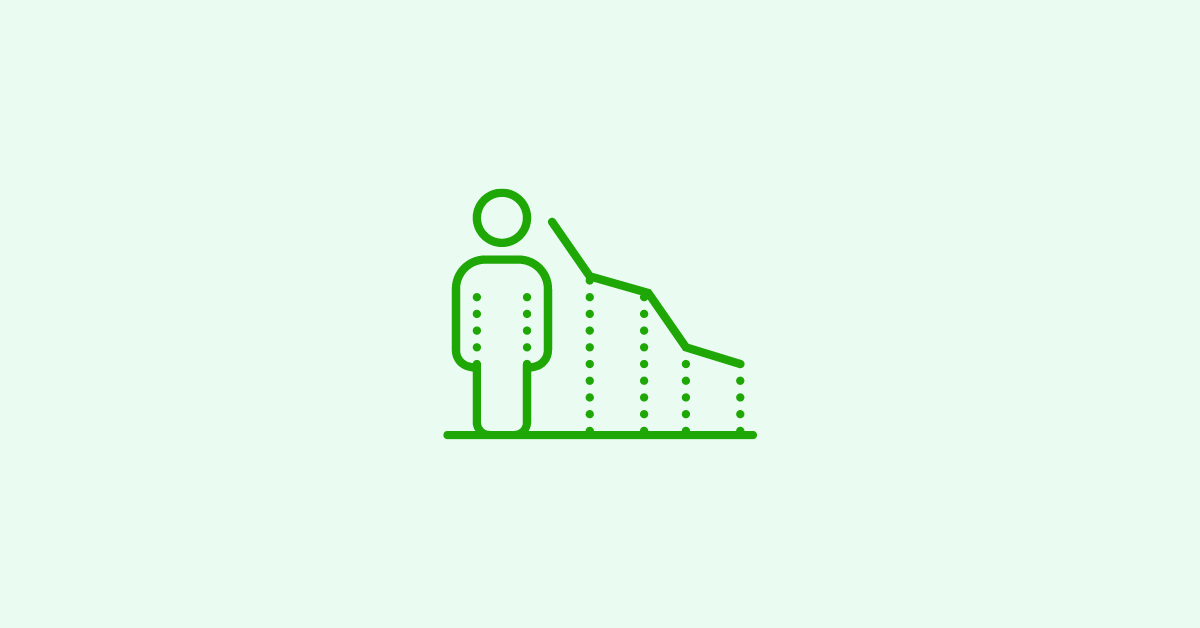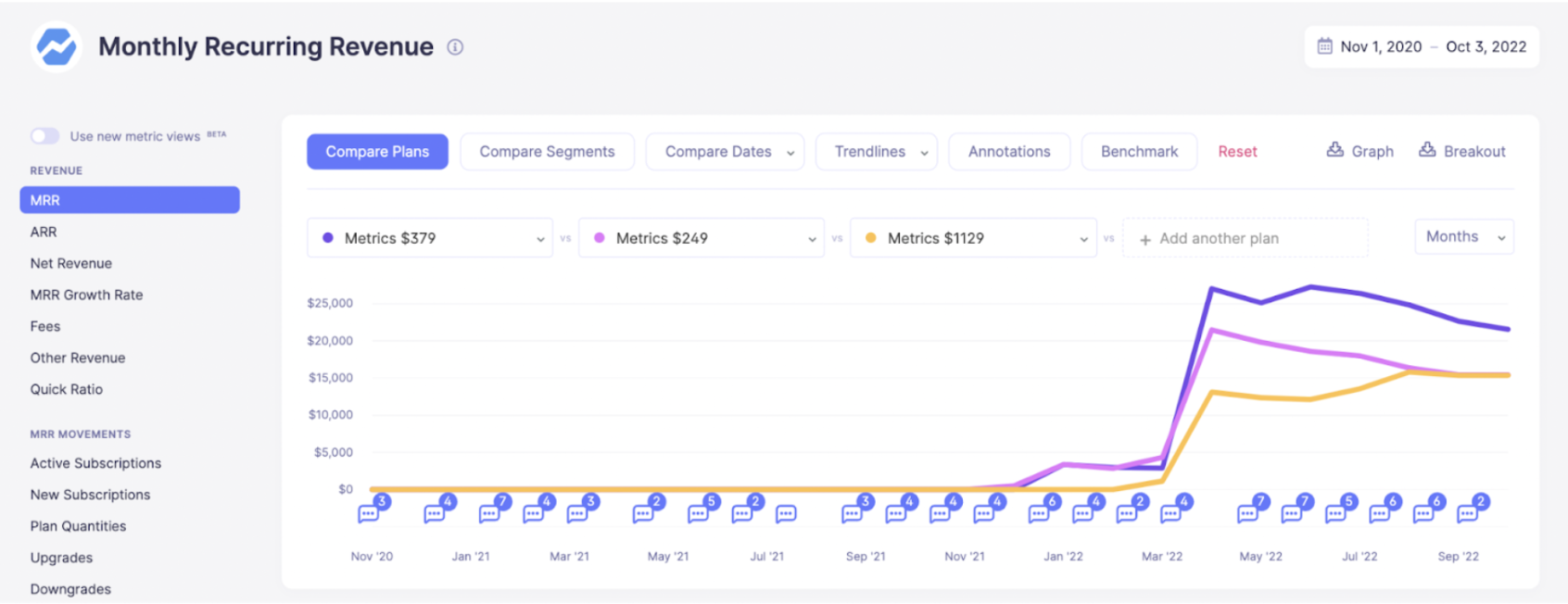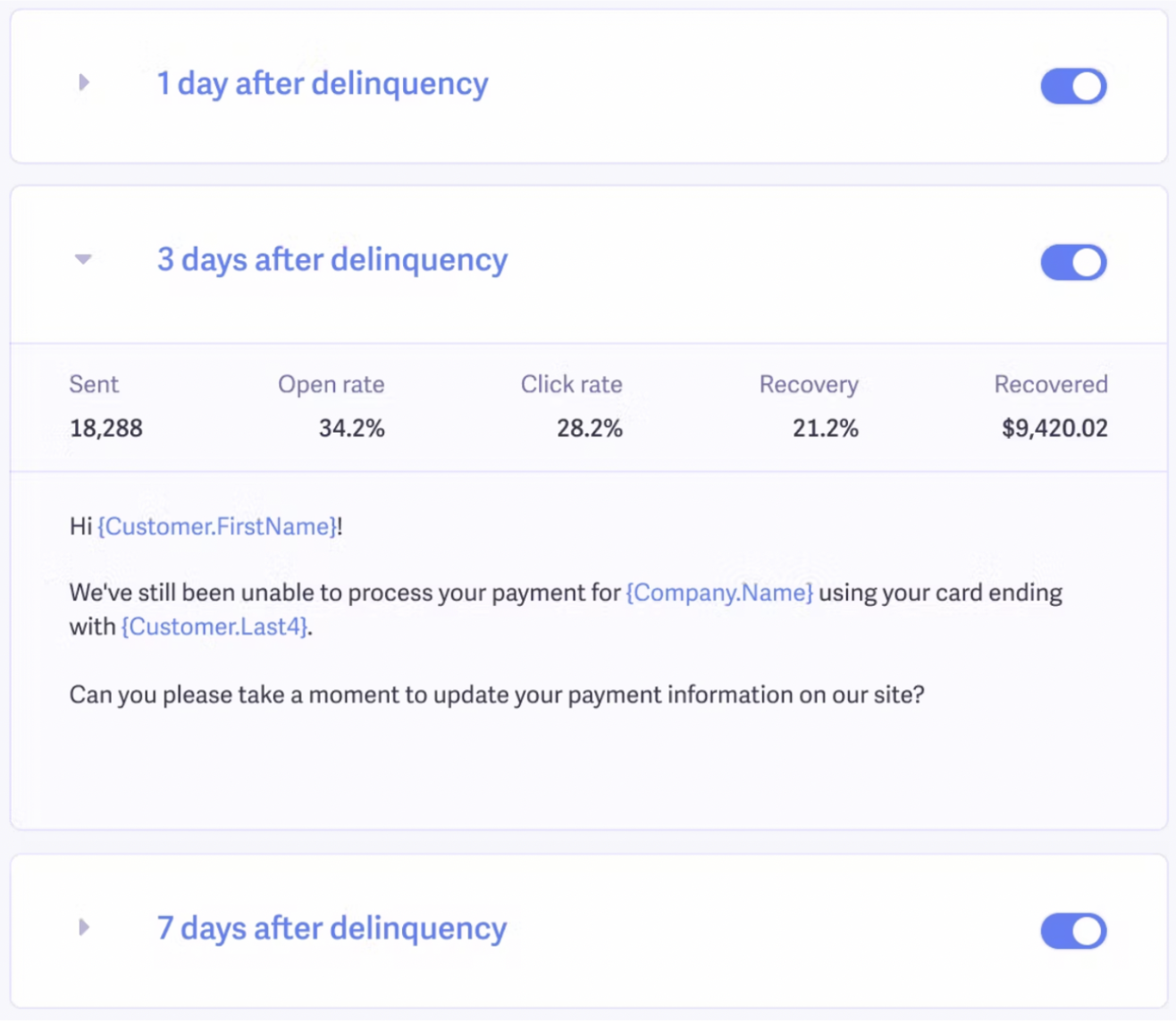Table of Contents

While churn is a natural thing for any SaaS or subscription business, it can be hard for large companies to know where it’s coming from. That’s because most large companies have many different teams, complex products, a variety of subscription options, and just more customers to deal with in general.
These can all be contributing factors to customer churn and lost recurring revenue — both of which hold back business growth in the long run. The good news? There are a number of ways for large companies to identify and reduce churn
Read on to learn more about reducing churn and building loyal customers at larger SaaS or subscription businesses.
The Impact of Customer Churn on Large Companies
For subscription-based companies, churn means a customer subscription has ended — either voluntarily or involuntarily. Customers may have a reason for ending their subscription (as we’ll discuss later) or they might simply have a failed payment that is left unresolved too long. Either way, customer churn negatively impacts arguably the most important metrics for subscription businesses: monthly recurring revenue (MRR).
The problem is that it’s hard to keep growing MRR if there’s a constant outflow of customers taking potential revenue with them. That means if your SaaS business has more than a 5-7% monthly churn rate — which is generally considered a “healthy” amount — you’ll want to work to improve it.
While many large companies have grown by focusing on acquiring new customers, there comes a point where steadily losing recurring revenue from churn cannot be ignored. In fact, when growth halts and MRR takes a hit, it’s easy to assume there are issues with marketing or sales when the problem is really related to churn. An obvious red flag, therefore, is when churn begins to outpace new customers.
More importantly, churn can indicate there is an underlying problem that will only continue to get worse as the company grows larger. Involuntary churn suggests payment issues aren’t being resolved in a timely manner. Meanwhile, voluntary churn means there are potential issues with pricing, subscription options, the customer experience, or the product itself. A downward trend in customer lifetime value (LTV) is an obvious sign that there are underlying problems developing as your business grows.
These are just a few ways churn impacts large companies, but nearly every SaaS or subscription business should work to reduce churn. While a small amount of churn is inevitable, there’s no reason to endure a high churn rate over the long term.
Why Do Large Companies Experience Churn?
Here are a few reasons many large SaaS companies experience customer churn.
Pricing
Everyone wants to receive the best product or service for the least amount of money, so subscription pricing will always be a deciding factor for some customers. The problem is that large companies have more overhead than startups, which means they often have to charge more to remain profitable. Over time, this can lead to an increase in customer churn if there aren’t subscription options (and prices) that appeal to different customer segments.
Seasonality
Depending on the industry and subscription offerings, seasonality can be an issue for large SaaS companies. While a startup can more easily adapt to churn during slower seasons, a larger company has more overhead and employees to support throughout the downturn. This makes it harder to “weather the storm” during low season for large SaaS companies.
Product Issues
As a SaaS company grows, its product often becomes more complicated over time. Each new feature can introduce technical issues that customers don’t want to deal with. Larger companies can also have slower development cycles than startups, so they might not be able to fix product issues fast enough to retain a dissatisfied customer.
Poor Customer Service
Large companies have more customers (and often more product issues), so there are inevitably more customer service inquiries as well. The problem is that it’s hard to scale customer service to resolve a large volume of issues, forcing many large companies to turn to automated solutions. But today’s consumers expect personalized interactions with a human element — and they might churn if that’s not the customer service experience they receive.
Failed Payments
While the previous four reasons for customer churn were voluntary, many large companies also experience involuntary churn if they’re not proactively resolving failed payments. Failed payments are inevitable, but they only lead to churn if companies don’t have an effective dunning process in place to help their customers fix payment issues.
5 Tips for Reducing Churn at Large Companies
As you can see, there are a number of reasons for churn at large companies, and it can have a substantial impact on MRR. Here are some ways to reduce churn.
1. Analyze Buying Patterns
Large companies have a lot of customer data they can analyze for buying patterns and churning trends. These customer insights can help SaaS companies determine which features customers are using to create more enticing subscription options for different customers segments. More importantly, customer behavior data can help with setting pricing tiers that optimize profitability and retention for a large customer base. Focusing on the most profitable customers is a smarter way to reduce churn than trying to completely eliminate customer cancellations.
2. Overcome Seasonality
Seasonality is inevitable for some industries, but it doesn’t have to lead to churn. One way to overcome seasonality is to encourage customers to choose annual subscriptions, preventing a spike in churn during part of the year. Another approach is to try to turn churns into downgrades with a cheaper subscription option. Customer behavior data can help large companies determine the right approach to overcome seasonality for their business and ensure they’re bringing in recurring revenue year round.
3. Identify Product Issues
There are a number of ways to obtain customer feedback from in-app feedback questionnaires to cancellation surveys by email. This customer feedback can help you identify whether there are product issues that are causing churn, whether it’s technical issues or a lack of certain features that a competitor product already offers. By discovering the most pressing product issues, large companies can prioritize their efforts to improve the overall customer experience.
4. Personalize Customer Experiences
Automation can help scale customer service, but it also needs to be highly personalized to reduce customer churn. In fact, 59% of customers value personalization over speed when it comes to customer service. Using in-depth customer profiles and segmentation data, SaaS companies can create highly personalized automated email campaigns to increase free trial conversions, promote subscription upgrades, prevent cancellations, and more.
5. Recover Lost Revenue
Failed payments only become lost revenue if companies don’t do anything to resolve them. By putting a revenue recovery process in place, large companies can immediately improve their MRR by reducing involuntary churn. For example, an effective revenue recovery solution can automatically resolve customer payment issues using custom email campaigns that improve customer relationships at the same time.
Reduce Customer Churn with Baremetrics
Baremetrics is a metrics, dunning, and engagement tool built for SaaS and subscription businesses. The platform offers a number of features that can help large companies reduce customer churn:
-
Customer Segmentation allows you to organize your data by segments based on geographic location, plan tier, and many other factors.
Using these customer segment insights, you’ll be able to set subscription tiers that make sense for your different types of customers to reduce churn due to pricing issues. This is also helpful for comparing the profitability of different segments to determine where to focus your customer retention efforts.

With Customer Segmentation, you can find out which plans are bringing in the most revenue. From there, you can figure out how to get more customers on that plan tier.
Cancellation Insights helps you understand churn trends and the reason behind subscription cancellations via automated surveys.

For example, you can quickly discover if a large number of customers are experiencing product issues that’s causing them to churn. This helps you understand what areas of your customer experience need to improve.
You can also optimize your retention efforts by targeting the most profitable customers and send personalized emails to potentially win them back.
Recover is an automated dunning solution that reduces involuntary churn using in-app notifications and personalized dunning email campaigns.

Since 9% of MRR is lost to failed payments on average, this can make a substantial impact on SaaS business growth. An automated dunning process can also help large companies scale their customer service by decreasing the number of payment issues that representatives need to resolve manually.
Baremetrics is a game-changer for large SaaS companies. Besides these features, our platform also offers forecasting, benchmarking, and other tools to propel your subscription-based business forward.
Sign up for a free trial to start reducing customer churn with Baremetrics today.



